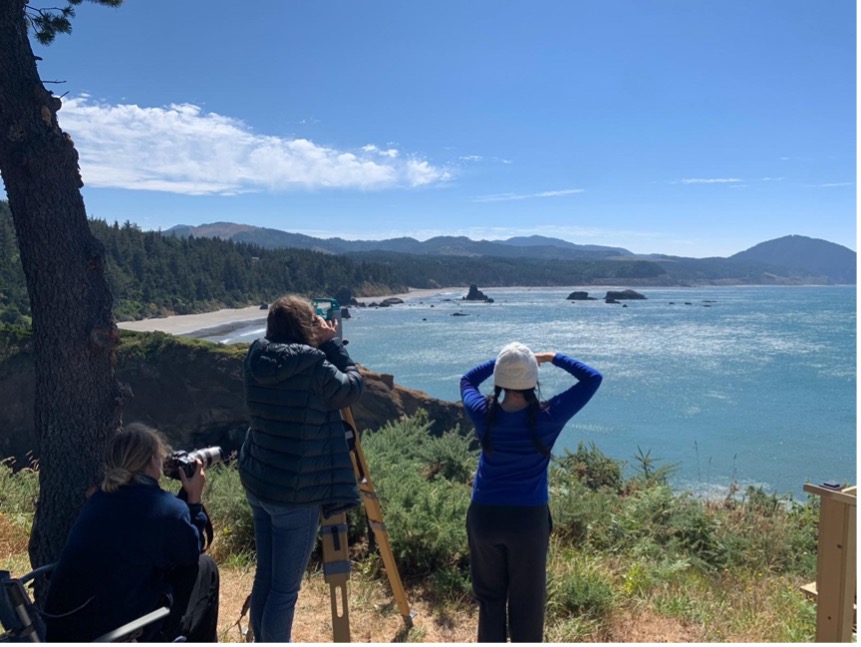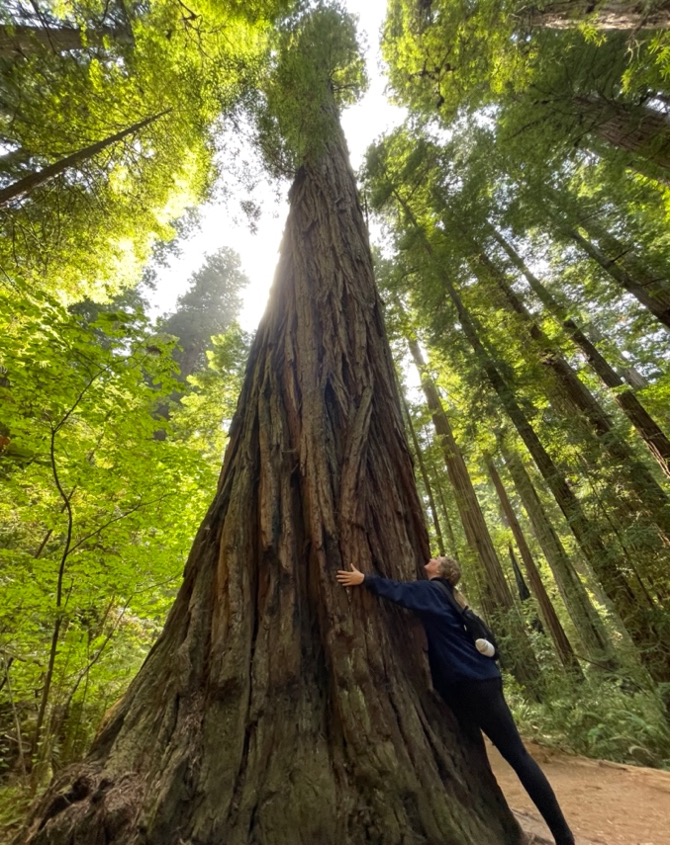Celest Sorrentino, incoming master’s student, OSU Dept of Fisheries, Wildlife, and Conservation Sciences, GEMM Lab
It’s late June, a week before I head back to the West Coast, and I’m working one of my last shifts as a server in New York. Summer had just turned on and the humidity was just getting started, but the sun brought about a liveliness in the air that was contagious. Our regulars traded the city heat for beaches in the Hamptons, so I stood by the door, watching the flow of hundreds upon hundreds of people fill the streets of Manhattan. My manager and I always chatted to pass the time between rushes, and he began to ask me how I felt to move across the country and start my master’s program so soon.
“I am so excited!” I beamed, “Also a bit nervous–”
“Nervous? Why?
“Are you nervous you’ll become the person you’re meant to be?”
As a first-generation Hispanic student, I found solace in working in hospitality. Working in a restaurant for four years was a means to support myself to attain an undergraduate degree–but I’d be lying if I said I didn’t also love it. I found joy in orchestrating a unique experience for strangers, who themselves brought their own stories to share, each day bestowing opportunity for new friendships or new lessons. This industry requires you to be quick on your feet (never mess with a hungry person’s cacio e pepe), exuding a sense of finesse, continuously alert to your client’s needs and desires all the while always exhibiting a specific ambiance.
So why leave to start my master’s degree?
Fig 1: Me as a server with one of my regulars before his trip to Italy. You can never go wrong with Italian!
For anyone I have not had the pleasure yet to meet, my name is Celest Sorrentino, an incoming master’s student in the GEMM Lab this fall. I am currently writing to you from the Port Orford Field Station, located along the charming south coast of Oregon. Although I am new to the South Coast, my relationship with the GEMM Lab is not, but rather has been warmly cultivated ever since the day I first stepped onto the third floor of the Gladys Valley Building, as an NSF REU intern just two summers ago. Since that particular summer, I have gravitated back to the GEMM Lab every summer since: last summer as a research technician and this summer as a co-lead for the TOPAZ/JASPER Project, a program I will continue to spearhead the next two summers. (The GEMM Lab and me, we just have something– what can I say?)
In the risk of cementing “cornball” to my identity, pursuing a life in whale research had always been my dream ever since I was a little girl. As I grew older, I found an inclination toward education, in particular a specific joy that could only be found when teaching others, whether that meant teaching the difference between “bottom-up” and “top-bottom” trophic cascades to my peers in college, teaching my 11 year old sister how to do fun braids for middle school, or teaching a room full of researchers how I used SLEAP A.I. to track gray whale mother-calf pairs in drone footage.
Onboarding to the TOPAZ/JASPER project was a new world to me, which required me to quickly learn the ins and outs of a program, and eventually being handed the reins of responsibility of the team, all within 1 month and a half. While the TOPAZ/JASPER 2024 team (aka Team Protein!) and I approach our 5th week of field season, to say we have learned “so much” is an understatement.
Our morning data collection commences at 6:30 AM, with each of us alternating daily between the cliff team and kayak team.
For kayak team, its imperative to assemble all supplies swiftly given that we’re in a race against time, to outrun the inevitable windy/foggy weather conditions. However, diligence is required; if you forget your paddles back at lab or if you run out of charged batteries, that’s less time on the water to collect data and more time for the weather to gain in on you. We speed up against the weather, but also slow down for the details.

Fig 2: Throwback to our first kayak training day with Oceana (left), Sophia(middle), and Eden (right).
For cliff team, we have joined teams with time. At some point within the last few weeks, each of us on the cliff have had to uncover the dexterity within to become true marine mammal observers (for five or six hours straight). Here we survey for any slight shift in a sea of blue that could indicate the presence of a whale– and once we do… its go time. Once a whale blows, miles offshore, the individual manning the theodolite has just a few seconds to find and focus the reticle before the blow dissipates into the wind. If they miss it… its one less coordinate of that whale’s track. We speed up against the whale’s blow, but also slow down for the details.

Fig 3: Cliff team tracking a whale out by Mill Rocks!
I have found the pattern of speeding up and slowing down are parallels outside of field work as well. In Port Orford specifically, slowing down has felt just as invigorating as the first breath one takes out of the water. For instance, the daily choice we make to squeeze 5 scientists into the world’s slowest elevator down to the lab every morning may not be practical in everyday life, but the extra minute looking at each other’s sleepy faces sets the foundation for our “go” mode. We also sit down after a day of fieldwork, as a team, eating our 5th version of pasta and meatballs while we continue our Hunger Games movie marathon from the night prior. And we chose our “off-day” to stroll among nature’s gentle giants, experiencing together the awe of the Redwoods trees.


Fig 4A & 4B: (A) Team Protein (Sophia, Oceana, Allison, Eden and I) slow morning elevator ride down to the lab. (B) Sophia hugging a tree at the Redwoods!
When my manager asked the above question, I couldn’t help but think upon an excerpt, popularly known as “The Fig Tree” by Sylvia Plath.

Fig 5: The Fig Tree excerpt by Sylvia Plath. Picture credits to @samefacecollective on Instagram.
For my fig tree, I imagine it as grandiose as those Redwood trees. What makes each of us choose one fig over the other is highly variable, just as our figs of possibilities, some of which we can’t make out quite yet. At some point along my life, the fig of owning a restaurant in the Big Apple propped up. But in that moment with my manager, I imagined my oldest fig, with little Celest sitting on the living room floor watching ocean documentaries and wanting nothing more than to conduct whale research, now winking at me as I start my master’s within the GEMM Lab. Your figs might be different from mine but what I believe we share in common is the alternating pace toward our fig. At times we need speeding up while other times we just need slowing down.
Then there’s that sweet spot in between where we can experience both, just as I have being a part of the 2024 TOPAZ/JASPER team.


Fig 6A and 6B: (A) My sister and I excited to go see some dolphins for the first time! (~2008). (B) Taking undergraduate graduation pics with my favorite whale plushy! (2023)

Fig 7: Team Protein takes on Port Orford Minimal Carnival, lots of needed booging after finishing field work!

